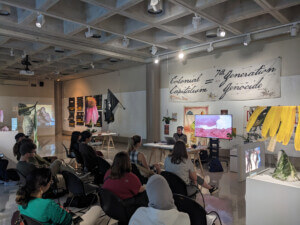The Washington, D.C.-based National Council of Architectural Registration Boards (NCARB) has for the first time included demographic data on Architect Registration Examination (ARE) pass rates in its tenth annual NCARB by the Numbers report.
The data, which examines key demographic categories including race and ethnicity, gender, and age, is featured in the Examination section of the report and provides a new level of analysis for NCARB’s yearly look at ARE pass rate figures. The ARE 5.0 is a six-part exam required by all state licensing boards, and passage is a pivotal step in the path to securing licensure. The presentation of this data is something of a rarity for licensing and credentialing organizations that freely share annual pass rates but almost always sans demographic information.
ARE’s six divisions are: Programming & Analysis, Practice Management, Practice Management, Project Development & Documentation, Project Planning & Design, and Construction and Evaluation, which had the highest overall pass rate in 2020 at 66 percent. Project Planning & Design had the lowest pass rate at 45 percent.
The demographic data presented in the 2021 edition of NCARB by the Numbers comes from more than 32,700 ARE test-takers. The key findings, which will also be published in a forthcoming joint report with the National Organization of Minority Architects (NOMA), include:
White candidates are more likely to pass all ARE divisions than BIPOC candidates: Looking at race and ethnicity, the highest disparity was found in the Programming & Analysis division, where the pass rate of white test-takers was 38 percentage points higher than that of their Black or African American peers. The smallest gap was in the Practice Management division, where the pass rates of white candidates was 27 percentage points higher. American Indian/Alaskan Native candidates had the second-highest pass rates of all races/ethnicities although the gap between white and American Indian/Alaskan Native candidates was considerable, ranging between 16–27 percentage points.
In general, men are more likely to pass than women: This trend was found in all ARE divisions, with the exception of Practice Management, where men and women performed equally. However, when gender, race, and ethnicity demographics were applied, data showed that women who identify as Black or African outperformed their male counterparts in four of the six divisions. The greatest pass rate gender disparity was among candidates identifying as Hispanic or Latino, in which men outperformed women in all six divisions.
Younger test-takers outperformed older ones: Also applicable across all six divisions was the finding that candidates aged 18–29 had the highest pass rate of any age group. Candidates over 40 had the lowest. The largest gap was found in the Programming & Analysis and Project Management divisions where the youngest age group outperformed the oldest by 14 percentage points.
“These findings, while not surprising to architects of color, are unacceptable,” said the newly inducted NCARB President, Alfred Vidaurri Jr., in a statement. “I challenge us to do better. During my year as president, analyzing, understanding, and addressing these disparities will be a key focus—and I invite the entire profession to join us.”
Vidaurri, a Fort Worth, Texas-based architect, is the first Latino president of NCARB in the organization’s 102-year history.
As further detailed in an NCARB press release, the organization’s data science and Examination teams, under Vidaurri’s leadership, are committed to further scrutinizing and resolving these disparities. Already, the teams are “actively working to understand the causes of testing disparities, assess internal design and development processes, consider next steps, and present solutions” per NCARB. Furthermore, NCARB has announced a series of actions, some of which are already underway, initiated to address the demographic disparities related to ARE pass rates.
These steps include: the appointment of ARE candidates to the 2021 Examination Committee for the first time in NCARB history; developing free practice tests for all six ARE divisions as a means of eliminating financial barriers associated with procuring test prep materials; gathering community feedback via two new outreach initiatives in 2021-2022, including circulating an Architecture Licensing Feedback survey and establishing licensure candidate focus groups conducted by an external consultant; conducting additional independent bias audits focused on pinpointing potential trends related to disparate pass rates, and more.
More specific details on these initiative proposals will become available later in the year.
“While there is always more NCARB can do to ensure our programs are fair and accessible, we cannot do it alone,” said NCARB’s Vice President of Examination Jared Zurn, in a statement. “We are calling on firms, academia, test takers, and the entire architecture profession to help us resolve disparities and continue this serious, but necessary conversation about the path to licensure.”











